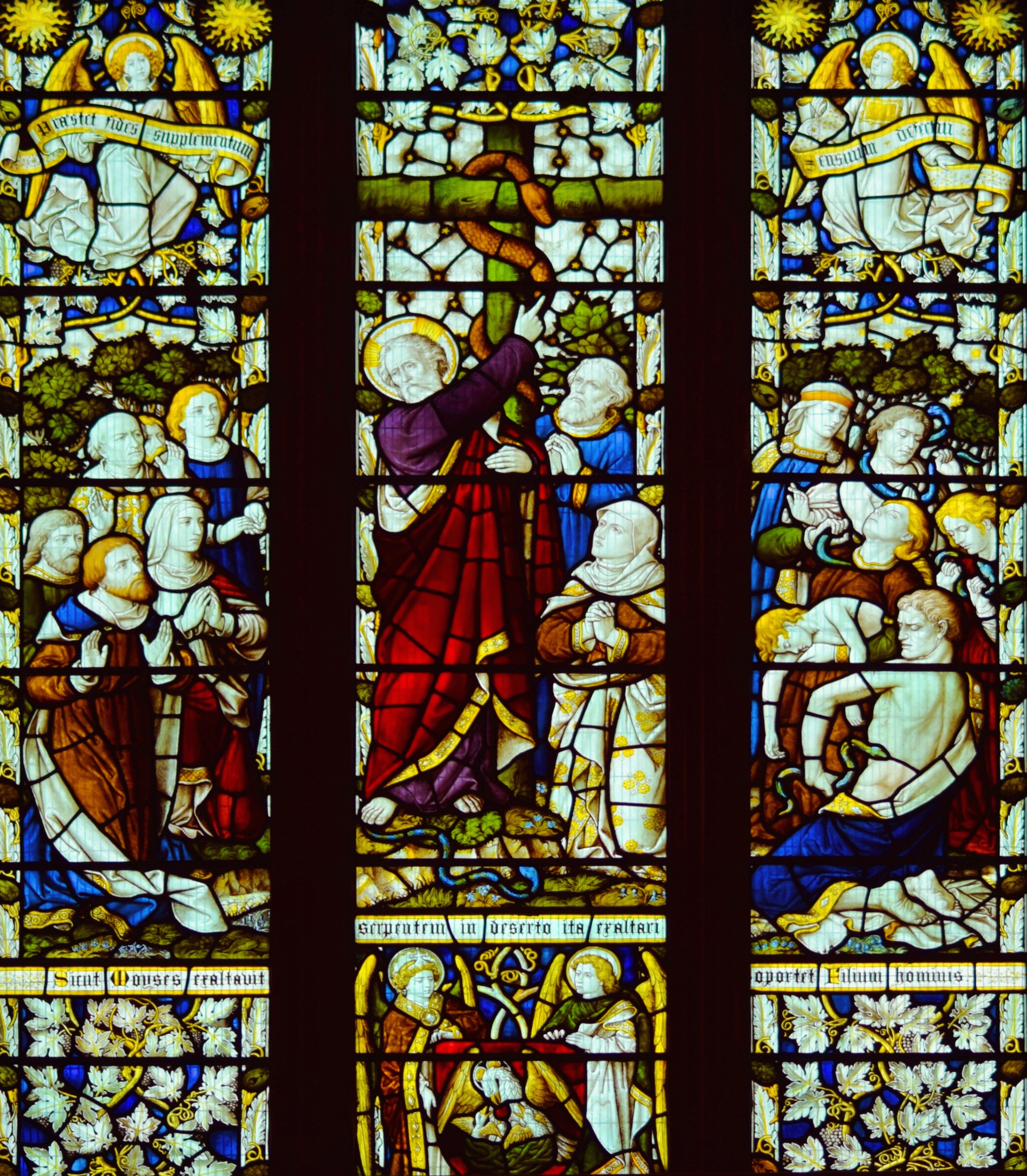The weird and wonderful story of Moses raising the Bronze Serpent in the wilderness includes a number of hidden messages about salvation.
Pope St John Paul II explained: “During Israel’s march from Egypt to the Promised Land, God permitted – because of the murmuring of the people – a plague of poisonous snakes, as a result of which many died. When the others understood their sin they asked Moses to intercede before God: “Intercede for us with the Lord to save us from these serpents” (Numbers 21:7).”
He added: “Moses prayed and received the following order from the Lord: “Make a fiery serpent and put it on a standard. If anyone is bitten and looks at it, he shall live” (Ibid. 21: 8). Moses obeyed the order. The bronze serpent set upon the standard became salvation from death for anyone who was bitten by the serpents.”
Why did God tell Moses to create a sign of a bronze serpent? The explanation is found later on in the Bible, in the book of Wisdom (16:7-8): “For the one who turned towards it was saved, not by the thing that was beheld, but by you, the Saviour of all. And by this also you convinced our enemies that it is you who deliver from every evil.” While the bronze serpent had a practical function, it also contained a message for the enemies of Israel, the Egyptians.
In Ancient Egypt, the serpent was a religious symbol for power and protection. The Pharaoh wore a headdress that featured an image of a cobra on the front. This was a symbol of the serpent goddess Wadjet, who was seen as the protector of Egypt. You can see an example of this on the famous death mask of the Pharaoh Tutankhamun.
The Israelites, who had lived in Egypt for years, would have understood that the serpent was a symbol of divine protection. So the underling message was that God, not Pharaoh or Wadjet, was the true protector of the people. The plan appears to be for this to be fed back to the Egyptians.
Yet the bronze serpent also had another, even deeper meaning. According to Christ himself, it was a symbol of his future death upon the Cross (John 3:14). Just as Moses ‘lifted up’ the bronze serpent to save the lives of the people, so Christ was to be ‘lifted up’ on the Cross to save the lives of all humanity.
In this stained glass scene, Moses is directing the Israelites to gaze upon the sign of the bronze serpent for their salvation. The people on the right are suffering particularly from the fatal snake-bites. The scene forms part of the West Window of the Holy Rood church in Watford. It’s by the Burlison & Grylls studio and dates to 1904.
The West Window of the church features many Old Testament stories that symbolise the upcoming death of Christ. This image sits next to an equally impressive scene of Joseph being victimised by his brothers. To further underline the prophetic meaning of Moses’ intervention, the standard on which the serpent is displayed is itself cross-shaped.
The text in Latin beneath the image are the words of Christ about the event, taken from John 3:14. Above, the two angels hold scrolls with words from the Benediction ceremony. They refer to faith in Christ superseding ancient forms of worship. The angels at the bottom hold an image of the Pelican, which is another traditional symbol of Christ as Redeemer.
See the full image:
 Burlison & Grylls / Moses raises the Bronze Serpent / Stained glass / 1904
Burlison & Grylls / Moses raises the Bronze Serpent / Stained glass / 1904
Where to find this work of art
Holy Rood, Watford
Read the relevant passage
Numbers 21:4-9
On a similar theme
- From the Old Testament: Moses worked various miracles in the wilderness, including producing water from the rock.
- From the New Testament: Christ spoke about this story with Nicodemus, when he described the serpent on the standard as a symbol of his crucifixion.

Thank-you!
My minister just used her sermon about WHY the cross was utilized with a SNAKE on Jesus’ emblems! Learn something (again??) everyday!
GOD BLESS
LikeLike